Affiliate links on Android Authority may earn us a commission. Learn more.
LG V30 vs Samsung Galaxy Note 8
November 7, 2017
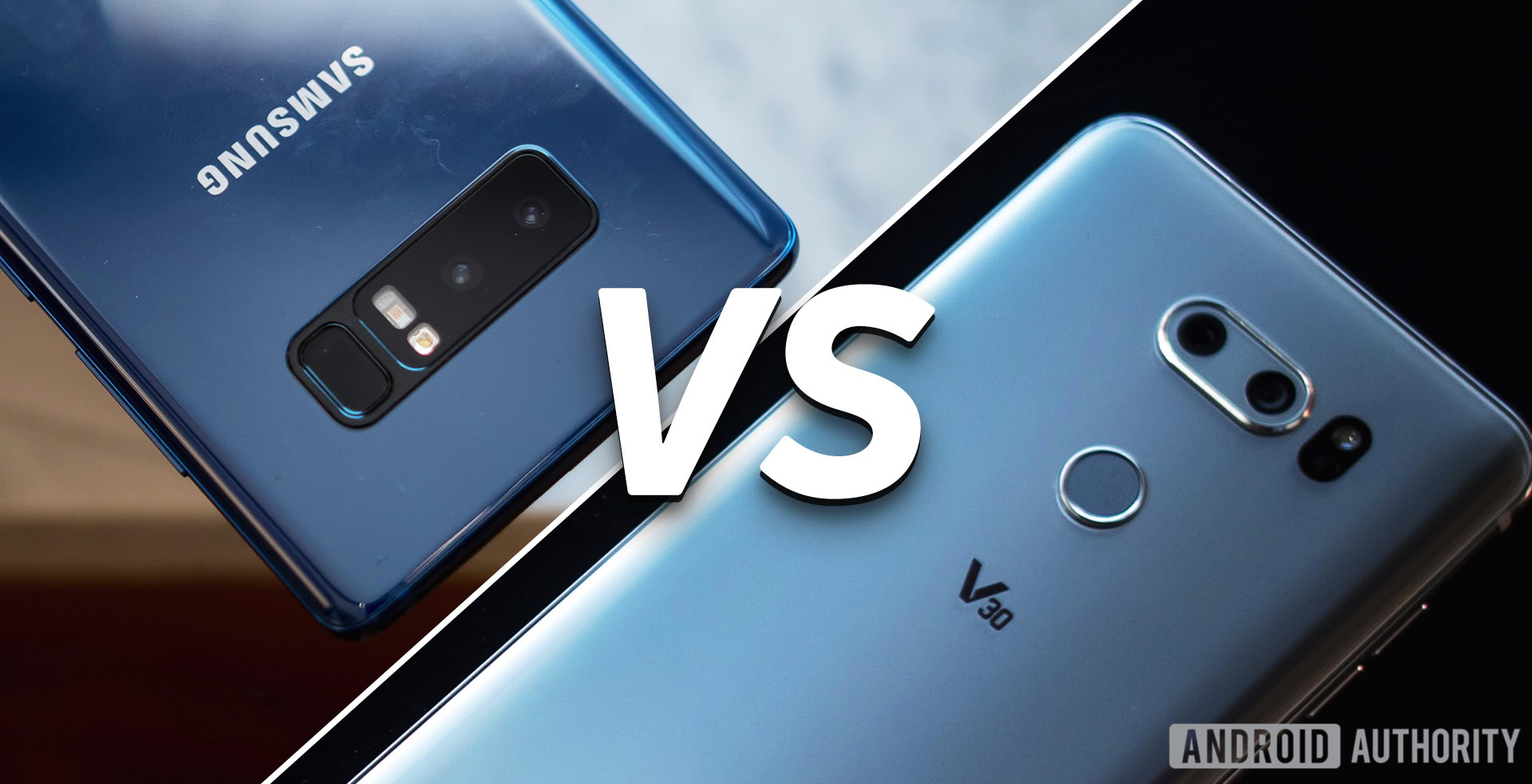
Samsung is the world’s largest manufacturer but one of its biggest challenges in 2017 has come from its own neighbor, LG. Samsung’s Galaxy S8 flagship saw off the challenge off the LG G6 but fast forward a few months and the battle has intensified with each company’s second major flagship of 2017.
- Samsung Galaxy Note 8 review: Do bigger things, at a bigger price
- LG V30 Review: A photography and videography dream
The Galaxy Note 8 was launched in August and set about reversing the damage caused by last year’s Note 7 fiasco, but just a few weeks later, LG took to the stage and offered up a very credible alternative to Samsung’s new flagship.
Both devices offer the very best in latest technology but which should you buy? Let’s find out as we pit the Galaxy Note 8 vs the LG V30!
Design
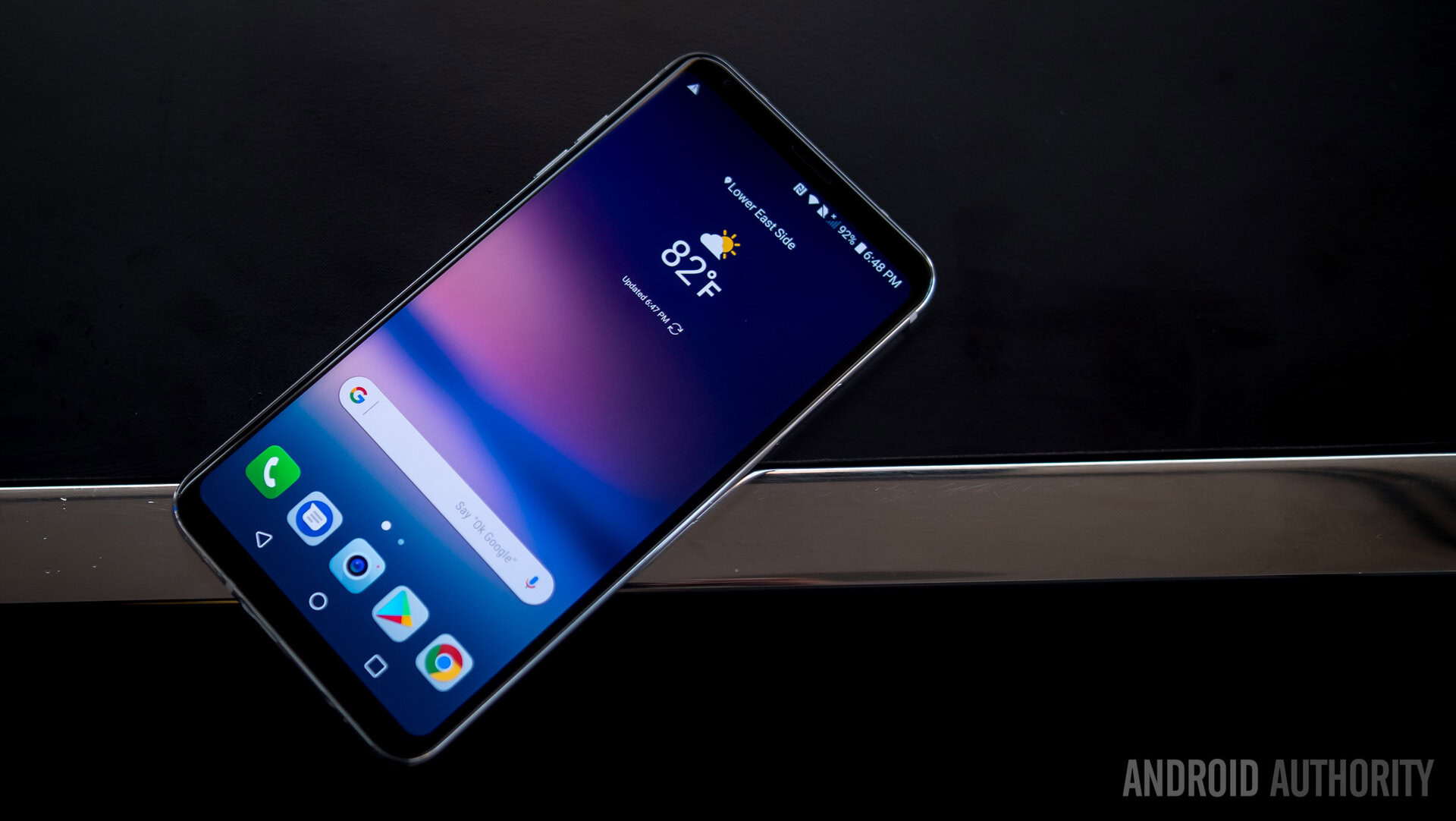
Both devices use similar materials with a glass front and back flanked by a metal frame, but that’s where the similarities in the design of both devices ends.
The Galaxy Note 8 follows the same design as the Galaxy S8 family, with the Infinity Display wrapping around the screen to offer an immersive experience. Like its cousins, the Infinity Display on the Note 8 is the first thing you see and never fails to capture the eye.
On the back, the rounded corners and curved edges are subtler than those on the Galaxy S8, which results in a slightly squarer look. The Galaxy Note 8 feels better than the Galaxy S8 family in the hand and despite being slightly larger, feels more symmetrical.
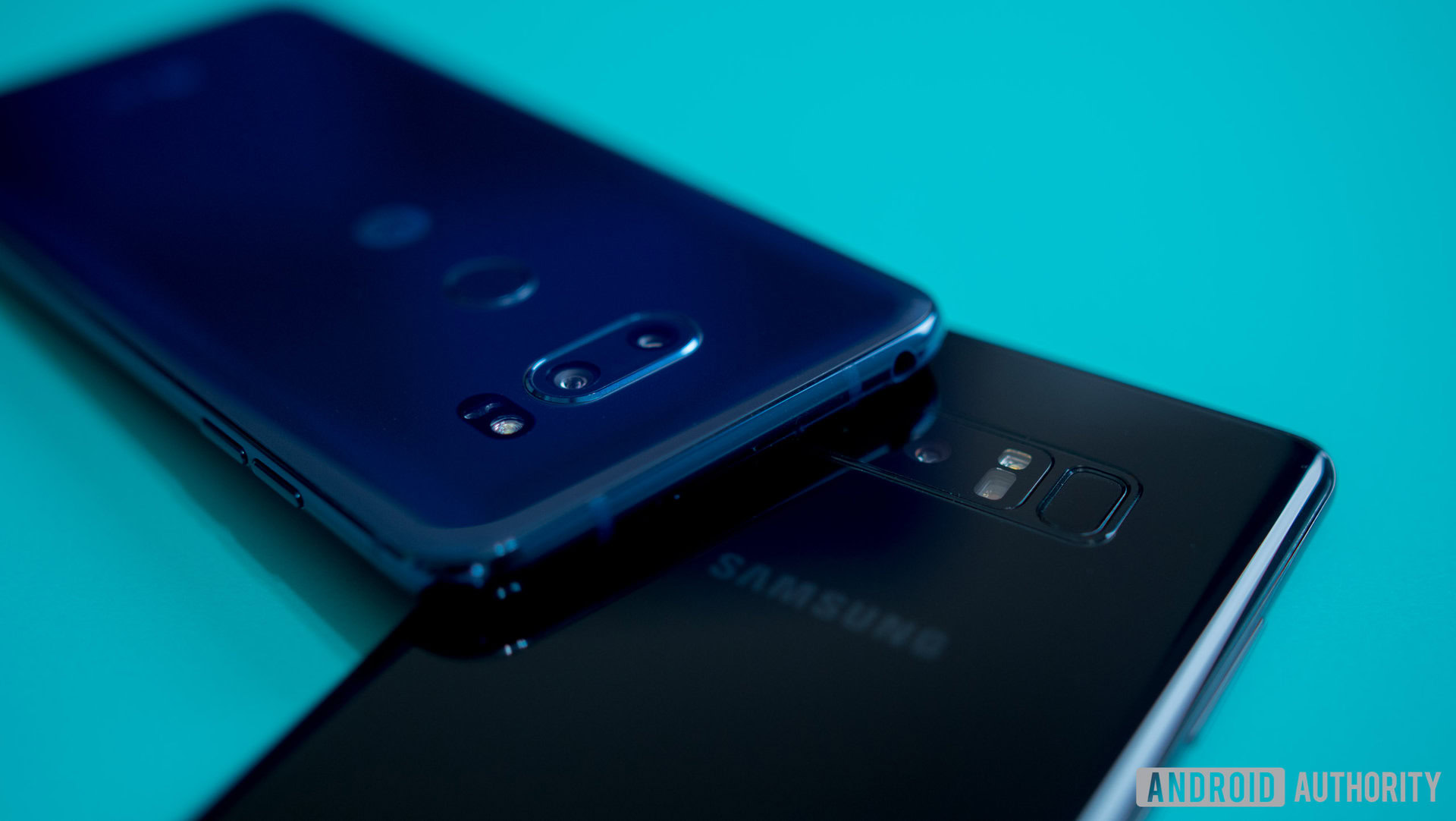
By comparison, LG hasn’t really stuck to a singular design language for its V-Series and in the V30, the company seems to have borrowed some design inspiration from its illustrious neighbor. Unlike the Note 8’s boxy design, the V30 uses more rounded corners and sides that are more akin to the Galaxy S8’s design language.
With that said, the V30 is much easier to hold in the hand and looks much prettier overall. As the smaller of the two, it’s much easier to use in one hand and the non-curved edges on the front of the screen make for a more pleasurable overall experience.
Display

This year saw both companies switch to the longer 18:9 aspect ratio, although in Samsung’s case the company opted for the slightly more awkward 18.5:9 aspect ratio. This switch has resulted in smaller bezels all around, with both displays offering vastly increased screen-to-body ratios over their predecessors.
As always, Samsung has delivered on our expectations of an excellent display
Samsung is known for offering some of the best smartphone screens possible and the Galaxy Note 8 follows this trend, with a large 6.3-inch Super AMOLED QHD+ display offering the most immersive experience on a Samsung device to-date. Like previous years, it offers an excellent experience and as always, Samsung has delivered on our expectations of an excellent display.
Samsung may have taken the same approach as previous years, but the biggest change came from LG. Unlike previous flagship devices, the V30 sees LG switch from IPS LCD to OLED, which Samsung has used in almost all of its Galaxy devices. Although it’s called p-OLED, it uses the same active pentile matrix found in Samsung’s AMOLED panels and shares the same characteristics.
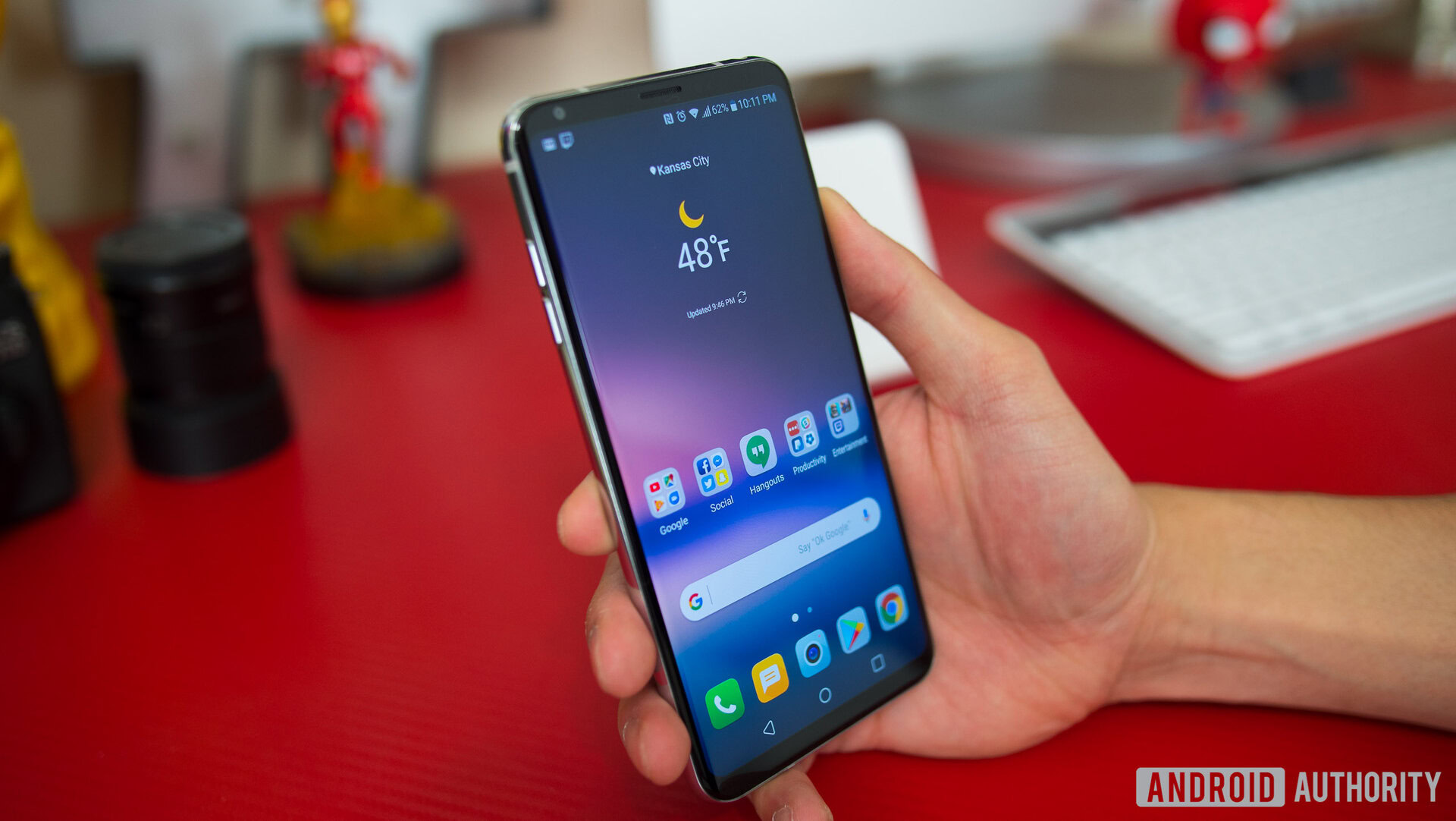
The V30’s display measures 6-inches and offers QHD resolution with a slightly higher 538ppi density compared to the Note 8’s 521ppi density. The switch to OLED is noticeable and LG’s panel stacks up competitively to Samsung’s OLED, offering vibrant colors, with deep dark blacks. While the LG-made Pixel 2 XL screen has some issues with blue tints, we found the LG V30’s display is generally more uniform.
Both displays are incredible looking displays that are perfect for almost anything, such as web browsing, watching videos and playing games. Both also support HDR, allowing you to have an even more immersive experience when viewing HDR content from providers such as Netflix and YouTube.
Performance
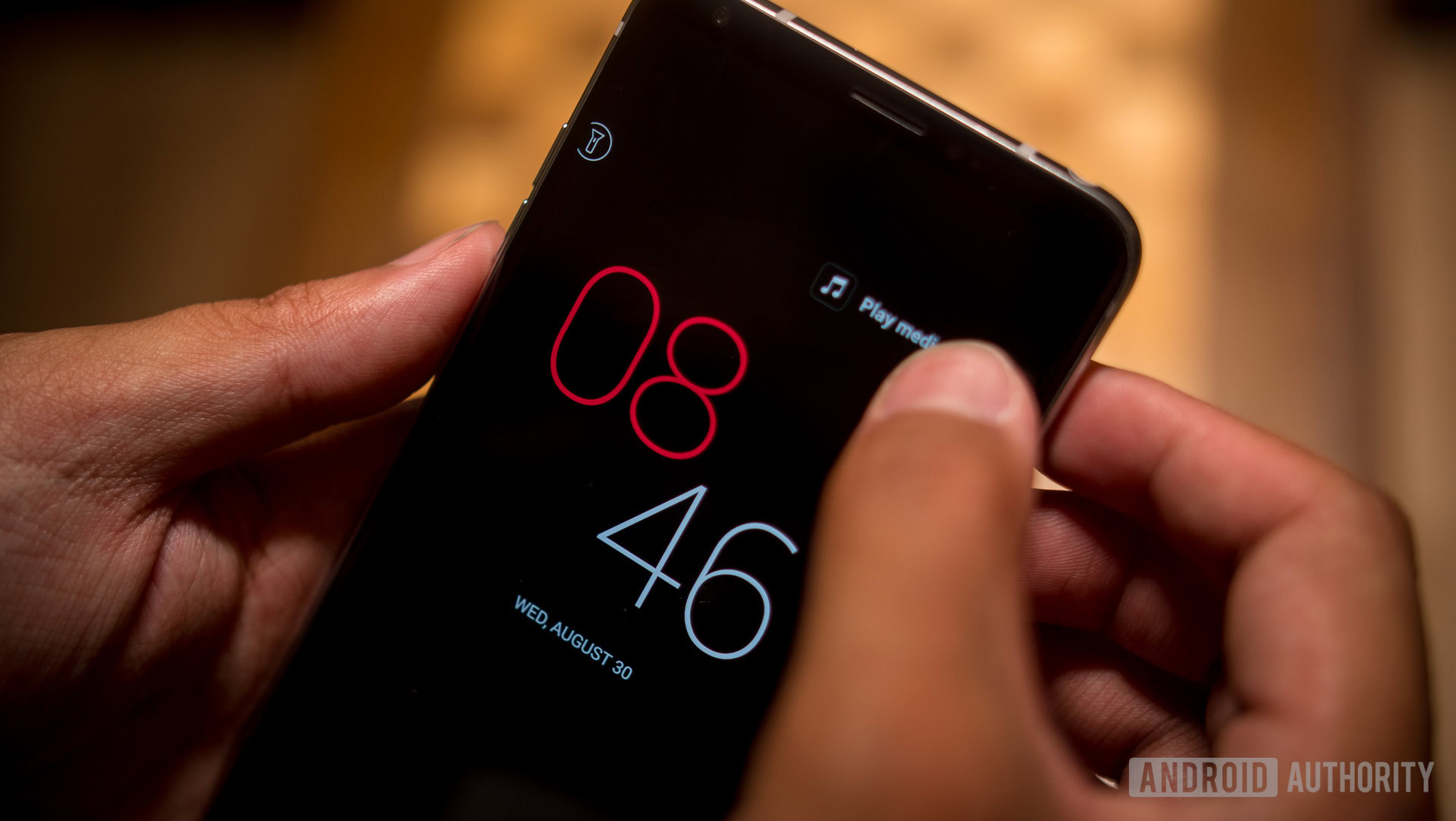
Under the hood, there’s not a lot of differences between these two devices, as they share a lot of the same specs. Both are powered by the Snapdragon 835 processor, which comes with an Adreno 540 GPU and offers a smooth experience with very little noticeable lag.
One of the biggest difference is the RAM, with LG using 4 GB of RAM in the V30 while the Galaxy Note 8 is the first Samsung smartphone to use 6 GB of RAM. Although the numbers may seem a little higher, there’s fundamentally not much different between the two devices when it comes to performance in day-to-day usage.
Hardware
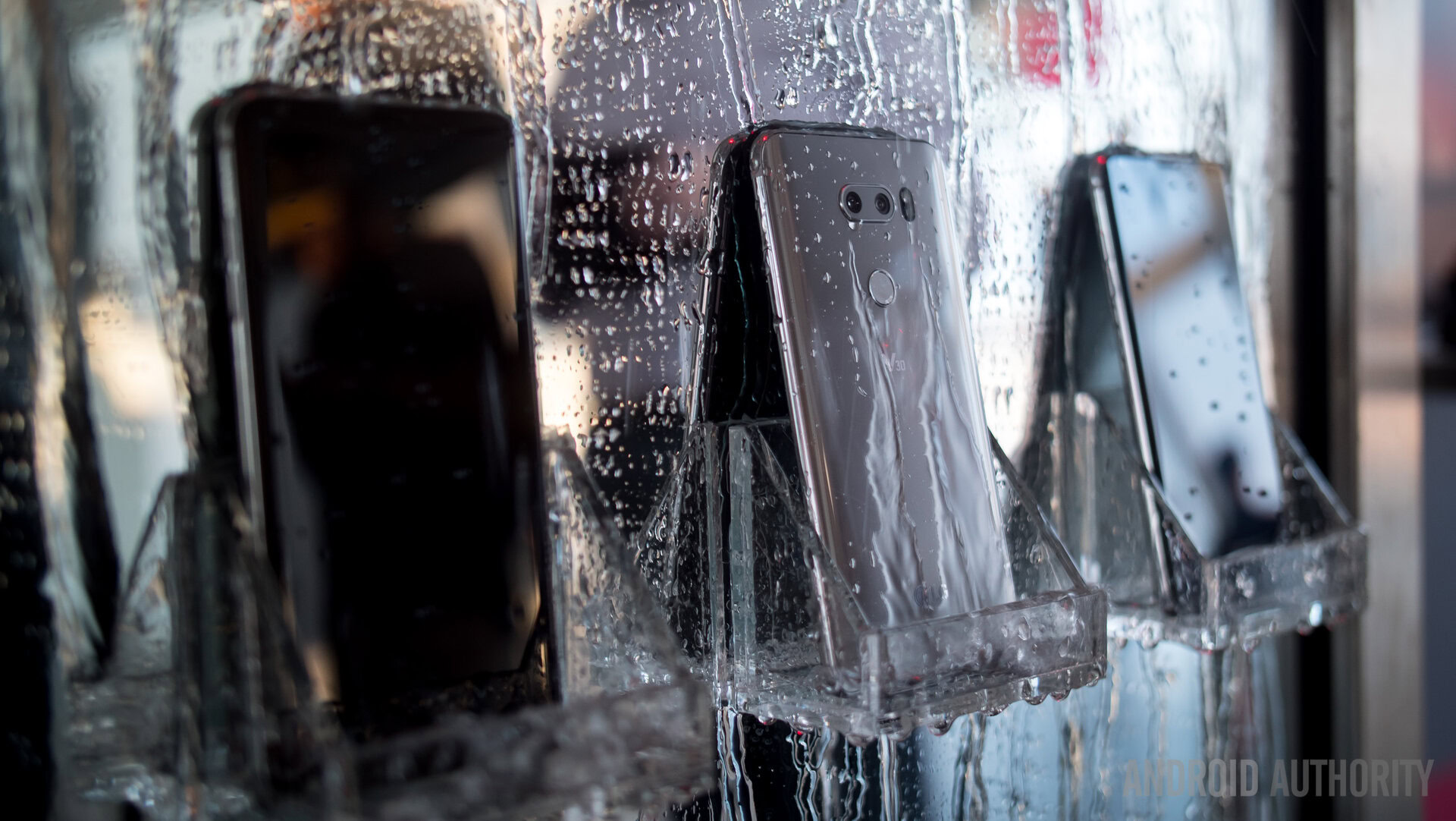
Like the processing package, there’s also very little difference between the V30 and Note 8 in the internal hardware. Each device offers a specs list that is on par with other 2017 flagship smartphones but there are a few differences between the two.
Each device comes with 64GB and 128GB of internal storage depending on the version you buy and there’s also a 256GB option available for the Galaxy Note 8 in selected markets. This can also be expanded using a microSD card, with both devices supporting a maximum of 2TB extra memory.
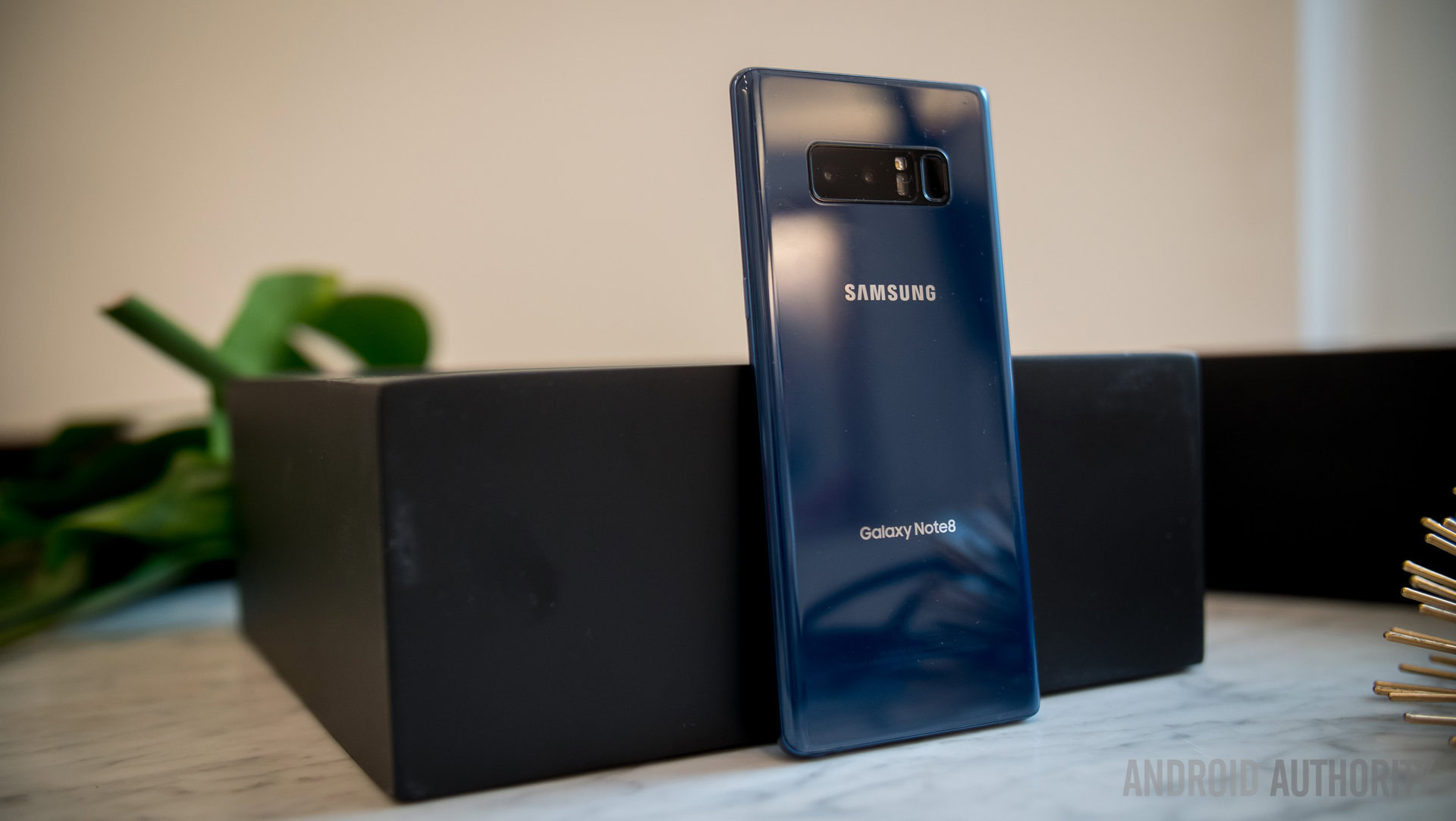
Samsung devices have offered wireless charging for the past few years and this year, LG has also included the feature in the V30 which brings it on par with the Galaxy Note 8. Both devices come with an IP68 rating for dust and water resistance, but the LG V30 is more durable than the Note 8 thanks to its MIL-STD 810G certification against damage from impact.
Audio is also where LG has stolen a march on its rival, with the V30 proving to be a phone made for audiophiles. The Hi-Fi Quad DAC that was included in selected regional variations of the LG G6 has been improved and now comes as standard in the V30, where it has been tuned by B&O Play. The LG V30 is also the first device to support MQA, which allows for streaming of high-resolution audio in a much smaller file size, without affecting the actual quality.
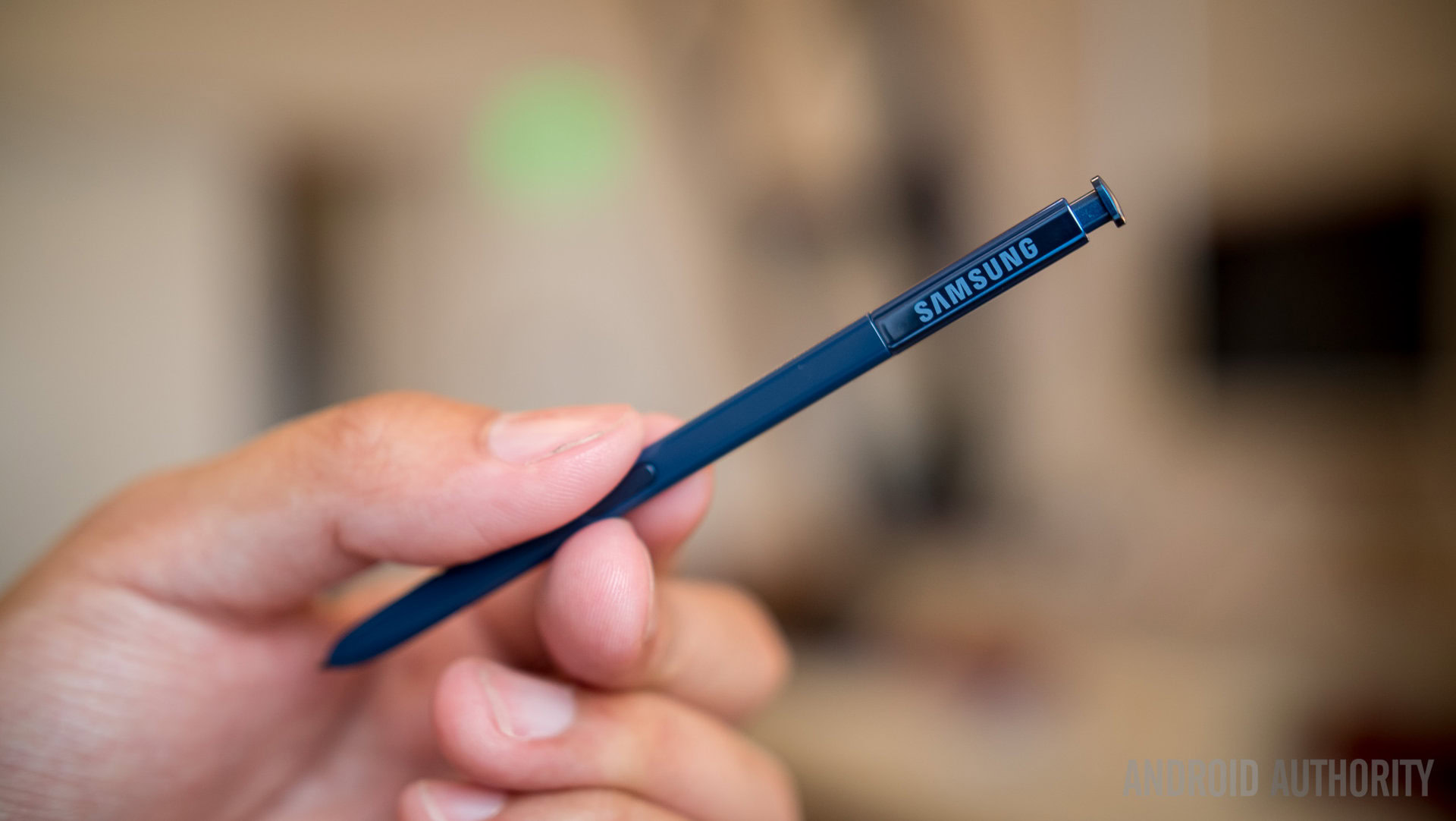
Of course, the Galaxy Note 8 wouldn’t be a Note device without a key feature that allows it to stand out from pretty much every other smartphone; the S-Pen. The Galaxy Note 8 doesn’t bring a whole lot of new features to the S-Pen but Samsung has refined the experience further, and while the hardware is the same, there are some software tweaks which we’ll talk about below.
Both devices are powered by a 3,300mAh battery, and during our testing, we found very little difference in day-to-day usage. On average, each device lasts a full day of usage (if not more) with around four to five hours of screen on time. For the times when they do run low, both devices support Qualcomm’s Quick Charge 3.0 fast charging solution and also come with wireless charging so there’s plenty of ways to get back up and running.
Camera
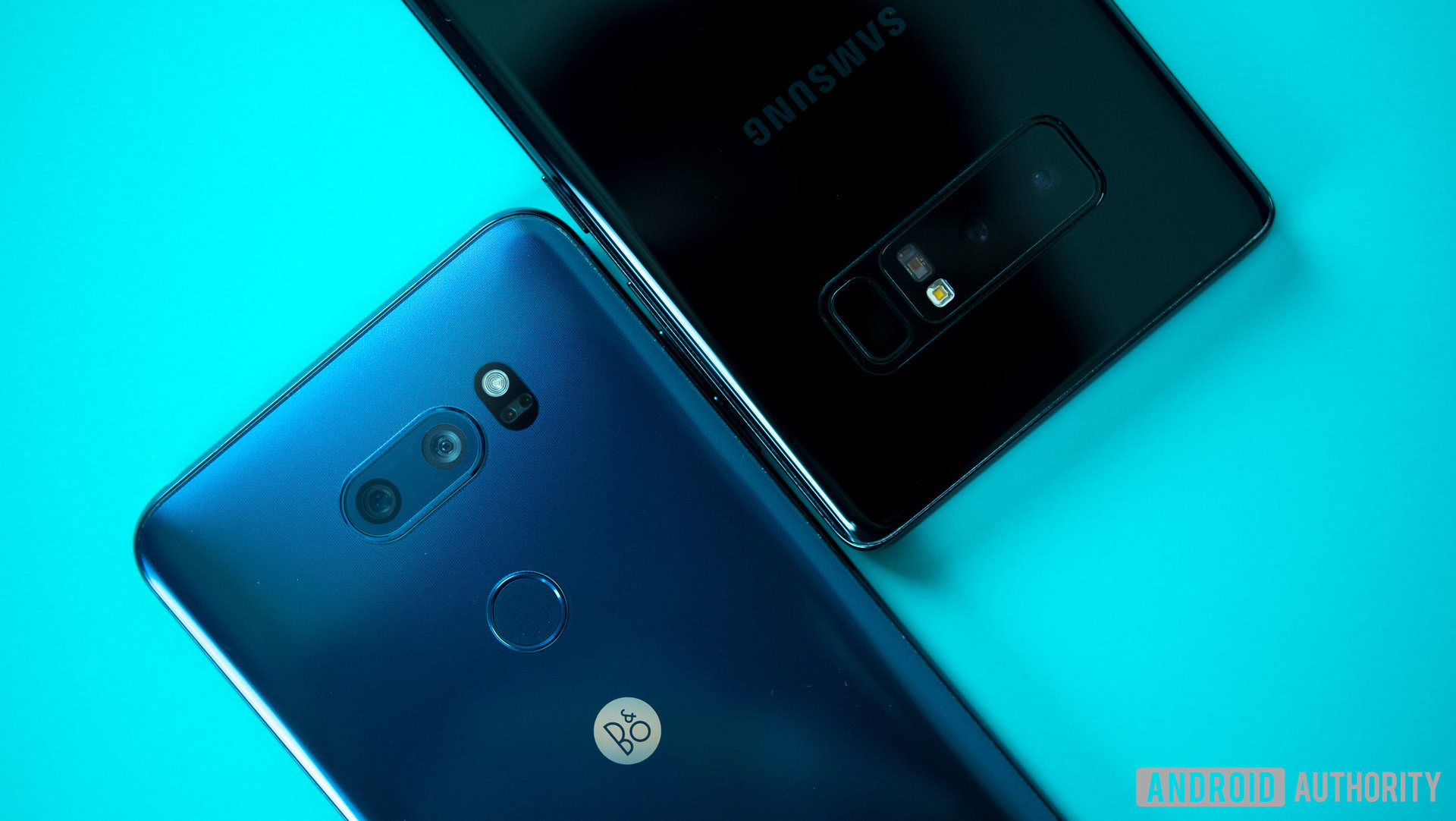
LG and Samsung have both excelled with cameras in their past flagships, and this year is no different. The biggest change against previous years however, is that Samsung is offering dual cameras on a flagship smartphone for the first time.
The Note 8 brings dual 12MP sensors with the telephoto lens offering 2x optical zoom at f/2.4 aperture and the regular lens offering f/1.7 aperture. The standout feature in the camera is OIS, as the Galaxy Note 8 is the first smartphone to offer this in both lenses. 10x digital zoom is theoretically possible with the Note 8’s configuration, but there’s a loss in quality, although OIS helps to negate the loss that comes with regular jitters as you zoom into images.
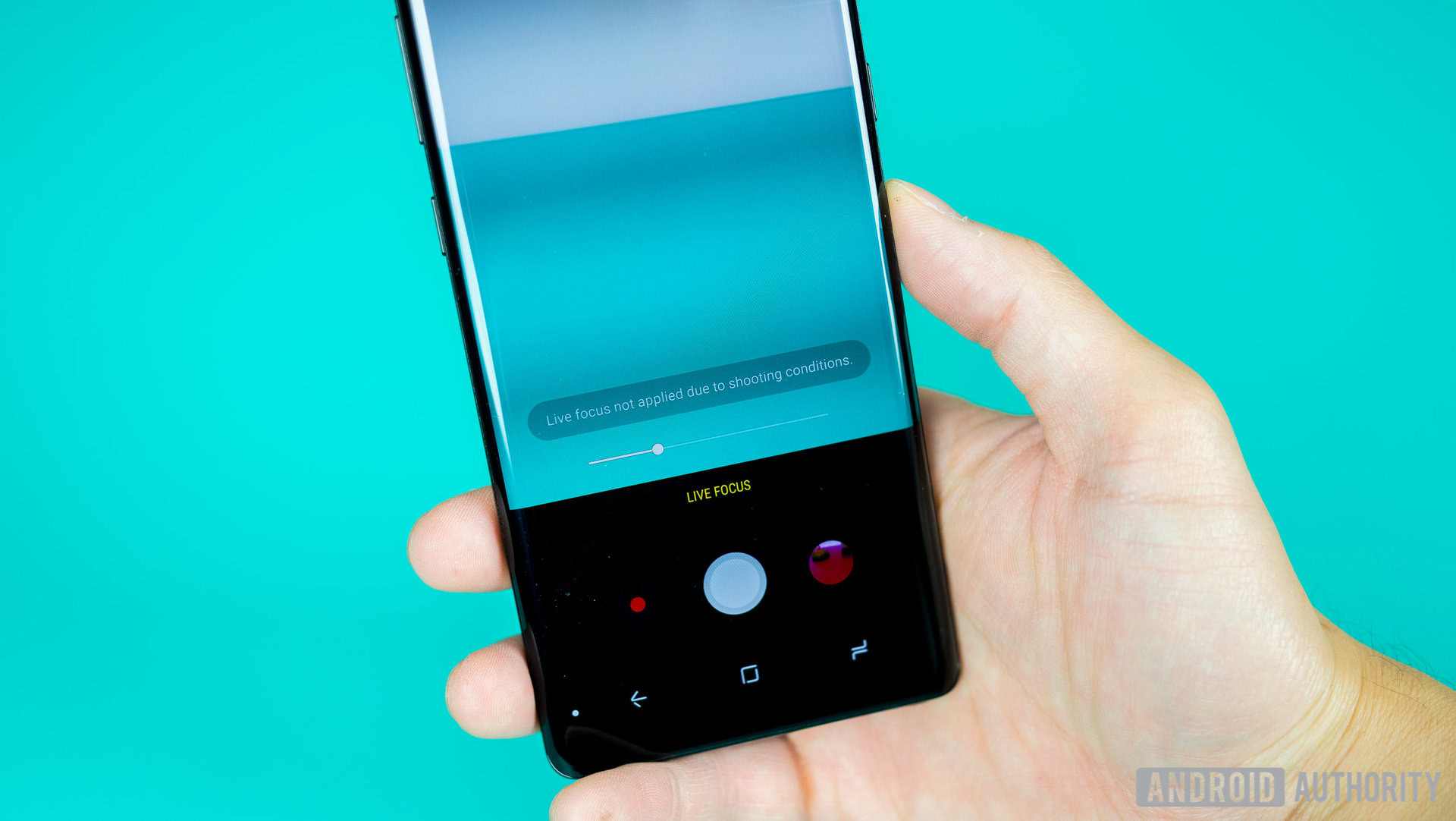
Like most other dual camera devices, the Galaxy Note 8 offers a depth-of-field mode that allows you to add bokeh to images with the background blurred out and the subject in focus. The Live Focus feature allows you to capture an image and adjust the background blur both, at the point of capture, and after you’ve taken the picture. When using Live Focus, the Note 8 will also save both images so you’re able to pick from access either image at a moment’s notice.
The Galaxy Note 8 continues Samsung’s trend of offering vibrant pictures and in our head-to-head, we’ve found it offers better dynamic range than the V30. This means its less likely to overexpose and blow out highlights, and offers a lot more detail in shadowy areas. By comparison, the V30 also brings dual cameras, but LG has stuck to its guns and taken a different approach to most other OEMs. While most companies pair a regular and telephoto lens (like Samsung did), LG’s approach is to offer a regular lens paired with a much wider lens which allows you to capture more in the scene.
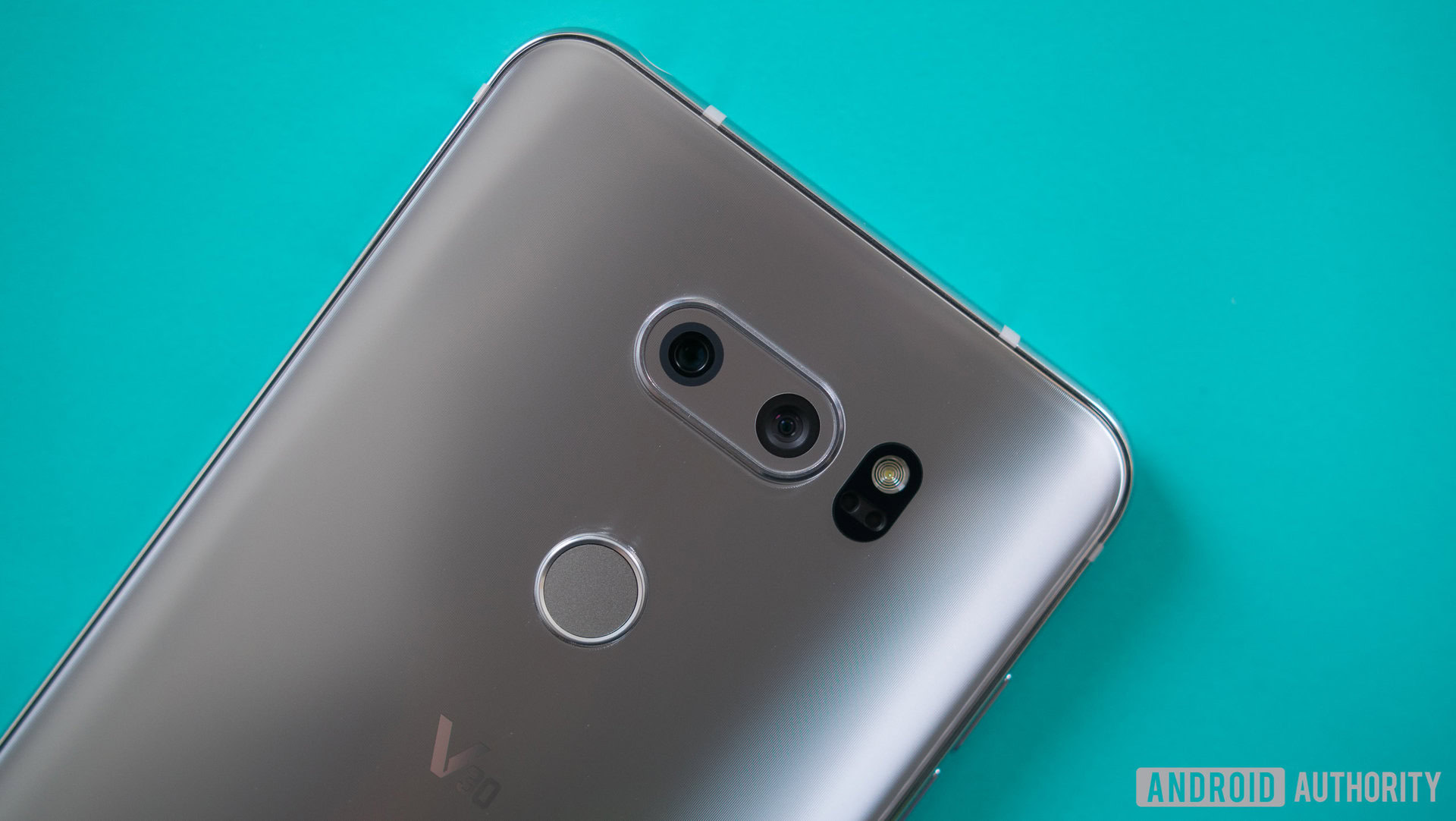
The main camera is a 16MP standard angle sensor with f/1.6 aperture, laser detection autofocus, and OIS, while the second lens with a 13MP wide angle sensor with f/1.9 aperture and super-wide 135° field of view. The much larger field of view makes this perfect for capturing landscape and group shots, but the lack of difference in focal length means you don’t get the depth of field bokeh effects that other dual-camera devices offer.
With that said, the LG V30 does an excellent job at capturing details and the wide-angle lens allows you to have a lot of fun with taking photos. Unlike previous years, LG has also removed the fish-eye effect on wide-angle images so you’re able to see the whole scene.
The V-Series has always focused on being the must-have tool for those who love to create memories and the V30 is no different, thanks to several new video features.
As much as the V30 focuses on photography, its real prowess becomes apparent when you switch to capturing video. The V-Series has always focused on being the must-have tool for those who love to create memories and the V30 is no different, thanks to several new video features.
The biggest of these is the ability to shoot in LOG-format. As any video professional will attest to, smartphone cameras can often boost the colors of video in a scene to the point they’re different to the actual scene. While you can edit these when capturing photos in RAW, it was not possible in video, until LG offered LOG-format in the V30. Now, you’re able to shoot in LOG and color-grade the footage in post-processing to make it exactly how you want it to.
LOG format means the V30 is the closest thing you’ll get to a DSLR-like camera experience on a smartphone.
For those who vlog, shoot videos on the go and do more with them than just upload to social media, this tool is invaluable as you can now use the V30 to capture those moments in a glance. LOG format means the V30 is the closest thing you’ll get to a DSLR-like camera experience on a smartphone.
LG’s additions to the camera don’t end there however as color grading and overall flexibility are large themes. As we covered in our full LG V30 review, there’s a lot you can do with the camera and the company wants to help regular users understand more about photography. The biggest way they’re doing this is through the GRAPHY app, which is made by LG and allows users to select a scene (such as landscape) and have a host of manual controls and settings applied automatically. The result is better overall photography in manual mode, which can be confusing for most regular users.
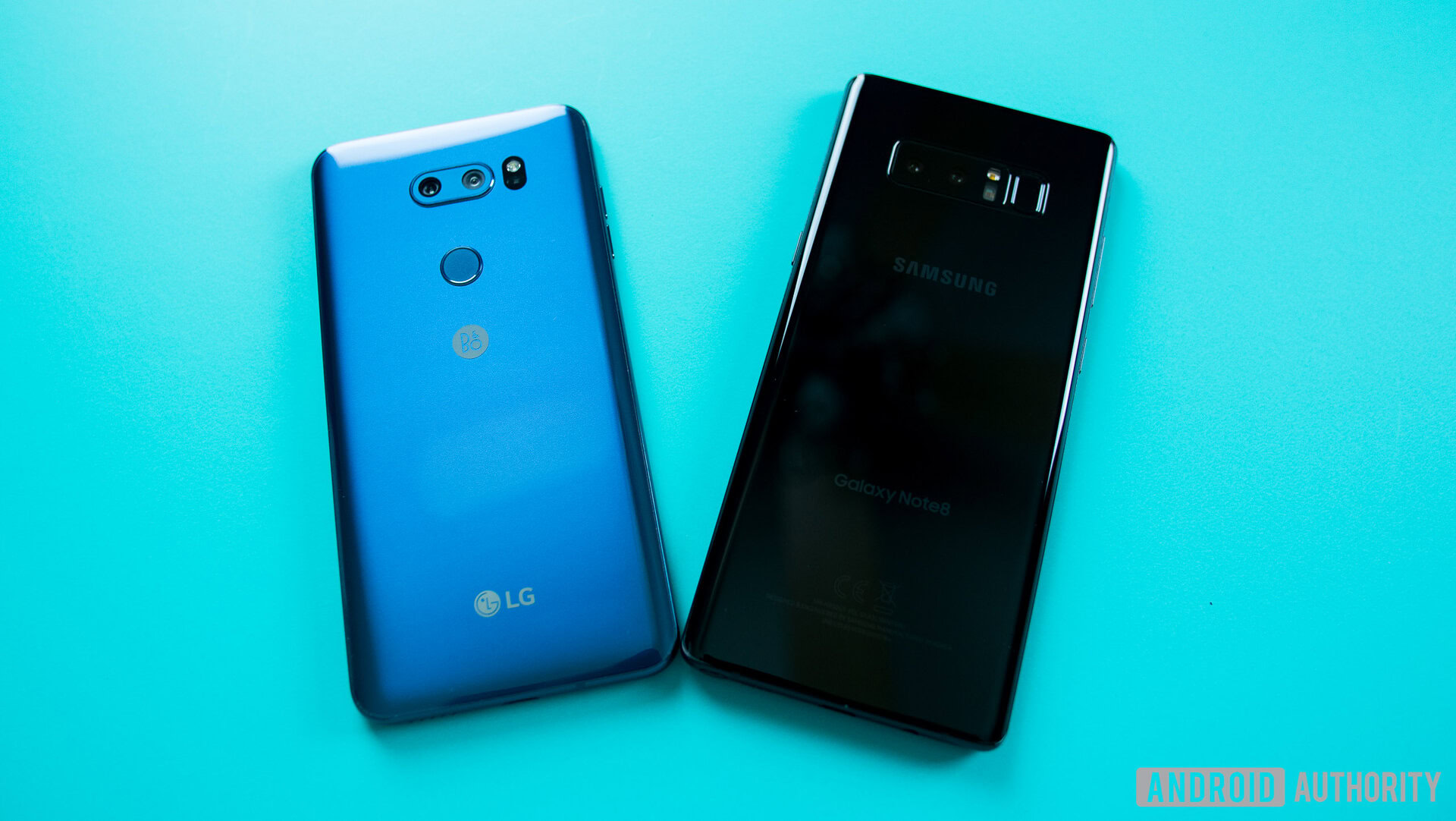
Overall, both cameras are excellent and the differences simply come down to your personal preferences. For most users, the depth of field effects and zoom capabilities of the Note 8 will likely appeal, especially as taking portrait photos with a blurred background is a large trend this year.
That said, the V30 makes taking photos fun especially as you can capture so much thanks to the wide-angle lens, and for anyone who’s remotely serious about capturing professional video on the go, LG’s additions to the video capabilities on the V30 make it stand out against any other smartphone.
Software
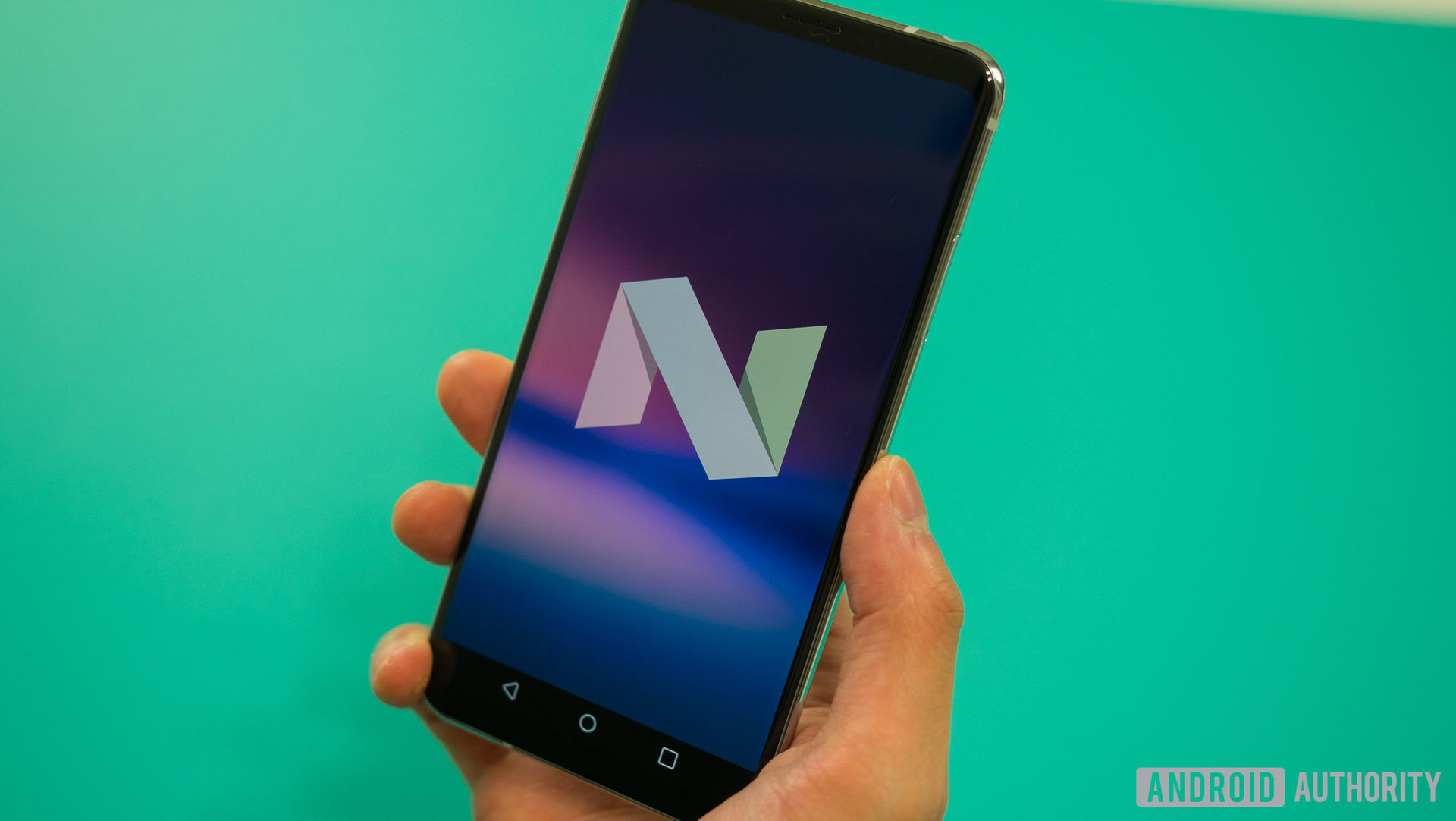
Although both devices launched just after Android Oreo was officially launched at the end of August, they are both running Android Nougat out of the box, with planned upgrades in the coming months.
Starting with the V30, LG’s user interface is a big improvement over older generations but is more colorful and cartoony than the Samsung Experience. As a result, it does feel like Samsung’s experience is more polished and refined overall, as the company hasn’t made any large UX changes.
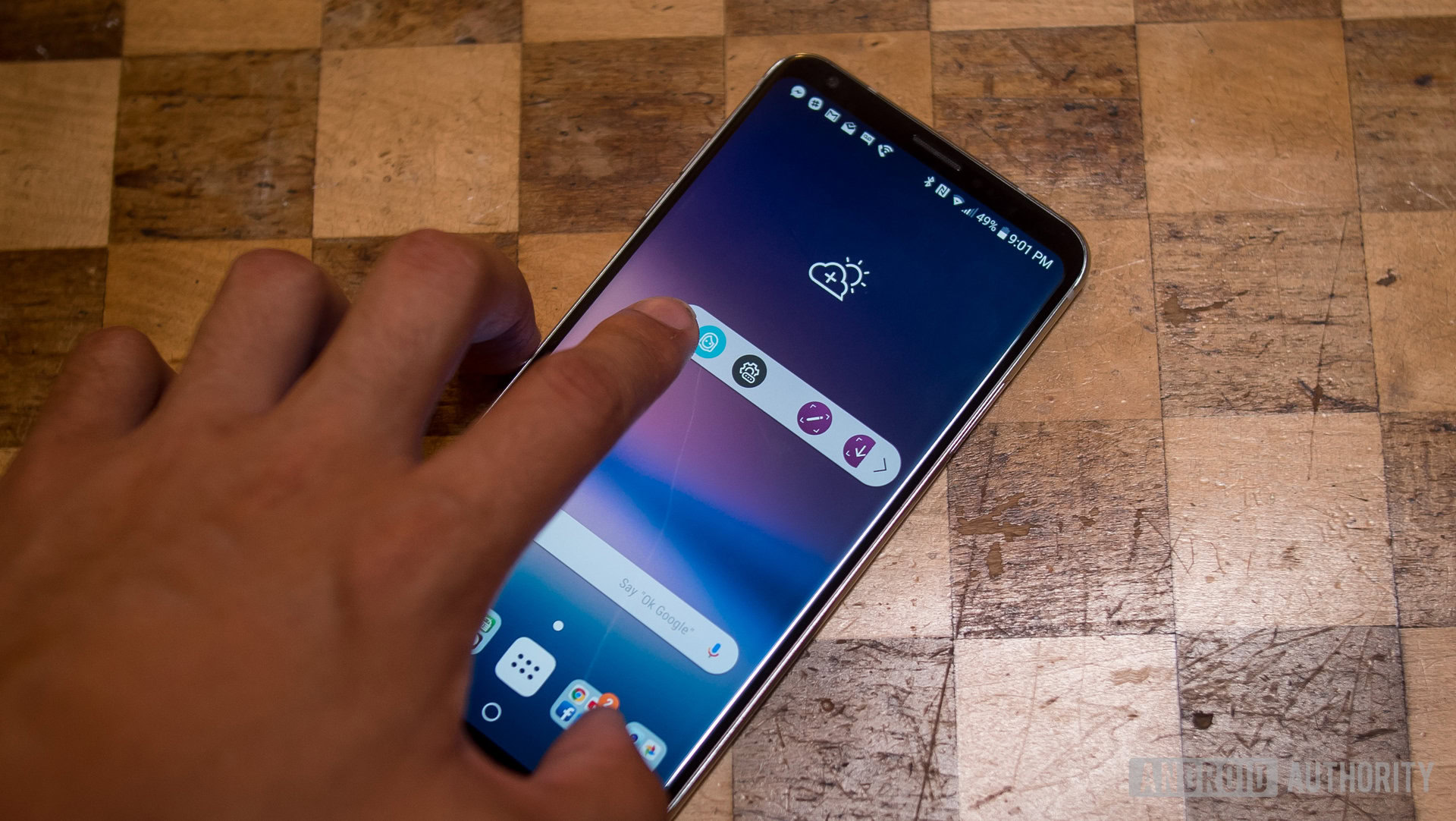
The main change in the V30 is the new floating bar feature, which aims to rival the Edge UX on the Galaxy Note 8, and is the software replacement for the second screen feature found on the LG V10 and LG V20. The floating bar offers easy access to a series of quick settings, shortcuts and apps and tucks away to the edge of the display when not in use. As it shrinks down to a small bar, you can move this anywhere on the screen and while it’s not a feature we use often, the screen capture and music player controls are both handy to have just a fingertip away.
The Galaxy Note 8 meanwhile brings a few new features and of course, some upgrades to the software experience on the S-Pen. The stylus remains the feature that helps the Note range stand out from the rest of the industry and this year, the few tweaks help to refine the experience further.
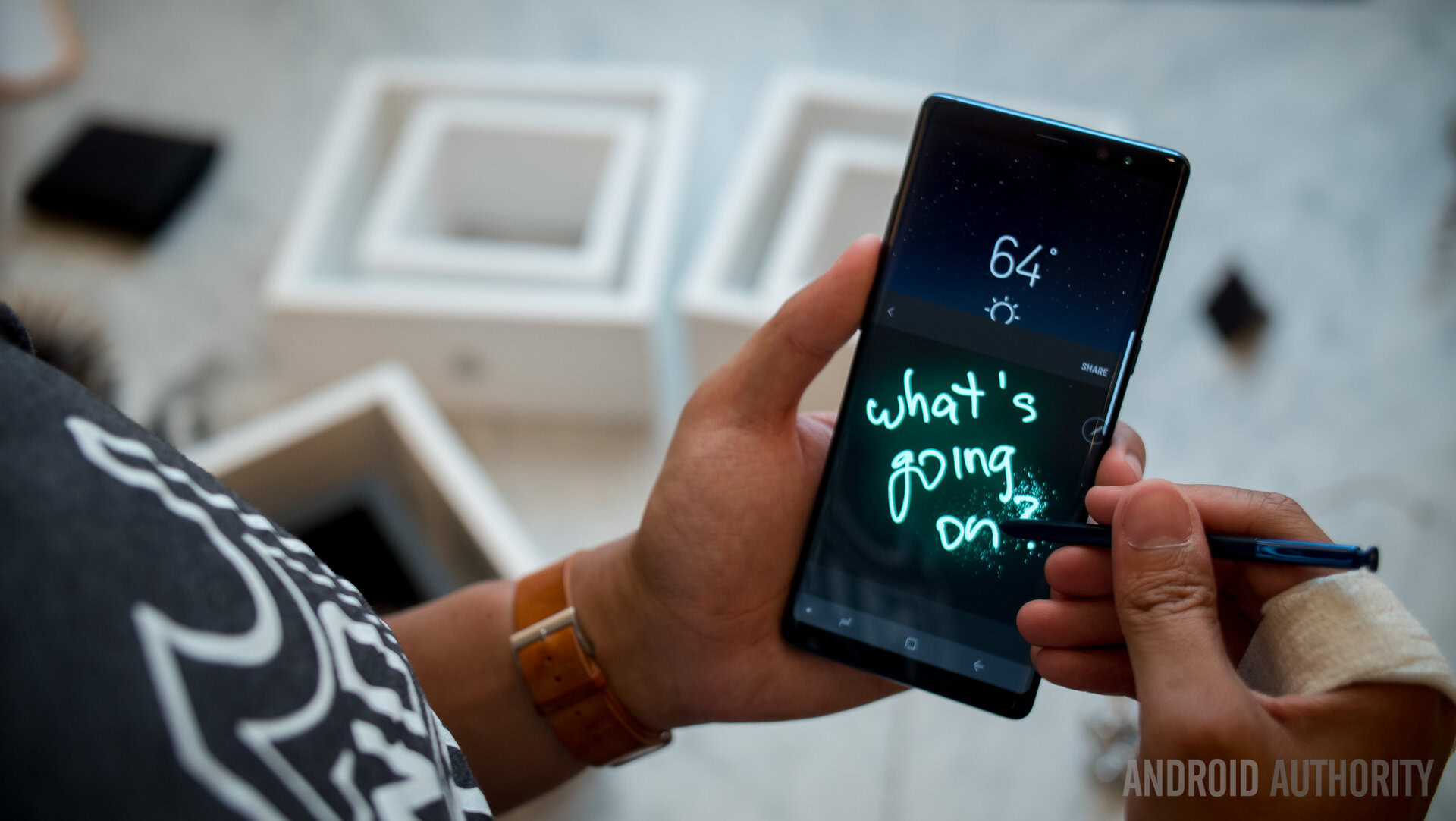
For me personally, the biggest upgrade is the ability to write up to 100 pages of screen off memos and pin them to the Always on Display, which can be edited after the fact. I use this for shopping lists, task-lists and to keep me focused during the day as I’m always glancing down at my phone. Other notable changes to the S-Pen experience include the ability to translate a whole sentence, annotate screen grabs and send animated messages as gifs using the Live Message feature (which I never use).
The Samsung Experience on the Galaxy Note 8 also brings a couple of other new features which helps refine its positions as the king of productivity. App twin is perfect for those who have several business and personal accounts to manage on one device and allows you to use two copies of an app that traditionally only supports one account, such as WhatsApp or Facebook.
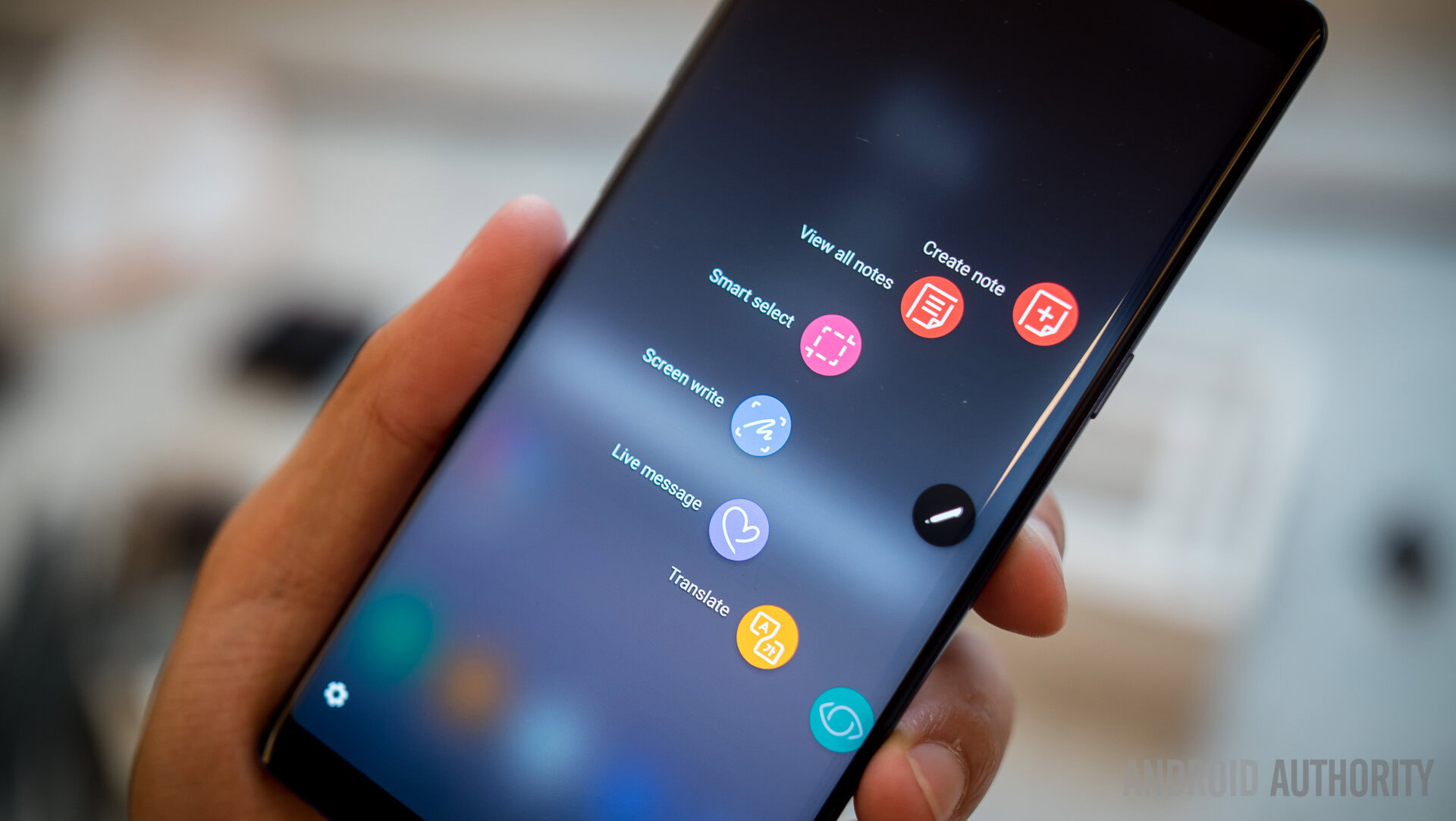
The other is my favorite and one I use often; the large screen real estate on the Galaxy Note 8 makes it perfect for split-screen multitasking and thanks to the new App Pairing feature, it’s never been easy to use two apps at once. App Pairing allows you to set up a shortcut to launch the same two apps at the same time, side-by-side or vertically. For example, I often watch videos while browsing Twitter so instead of launching YouTube, then activating the split screen feature and then selecting Twitter, I use a shortcut on the homescreen that launches both apps at the same time.
Artificial Intelligence has also been a key trend of 2017 and while the LG V30 relies solely on Google Assistant, Samsung has also added Bixby to the Galaxy Note 8. There’s some redundancy to having both Assistant and Bixby on the same device but Samsung’s Bixby does have a couple of cool features such as being able to change display brightness or download an app using just your voice.
Conclusion
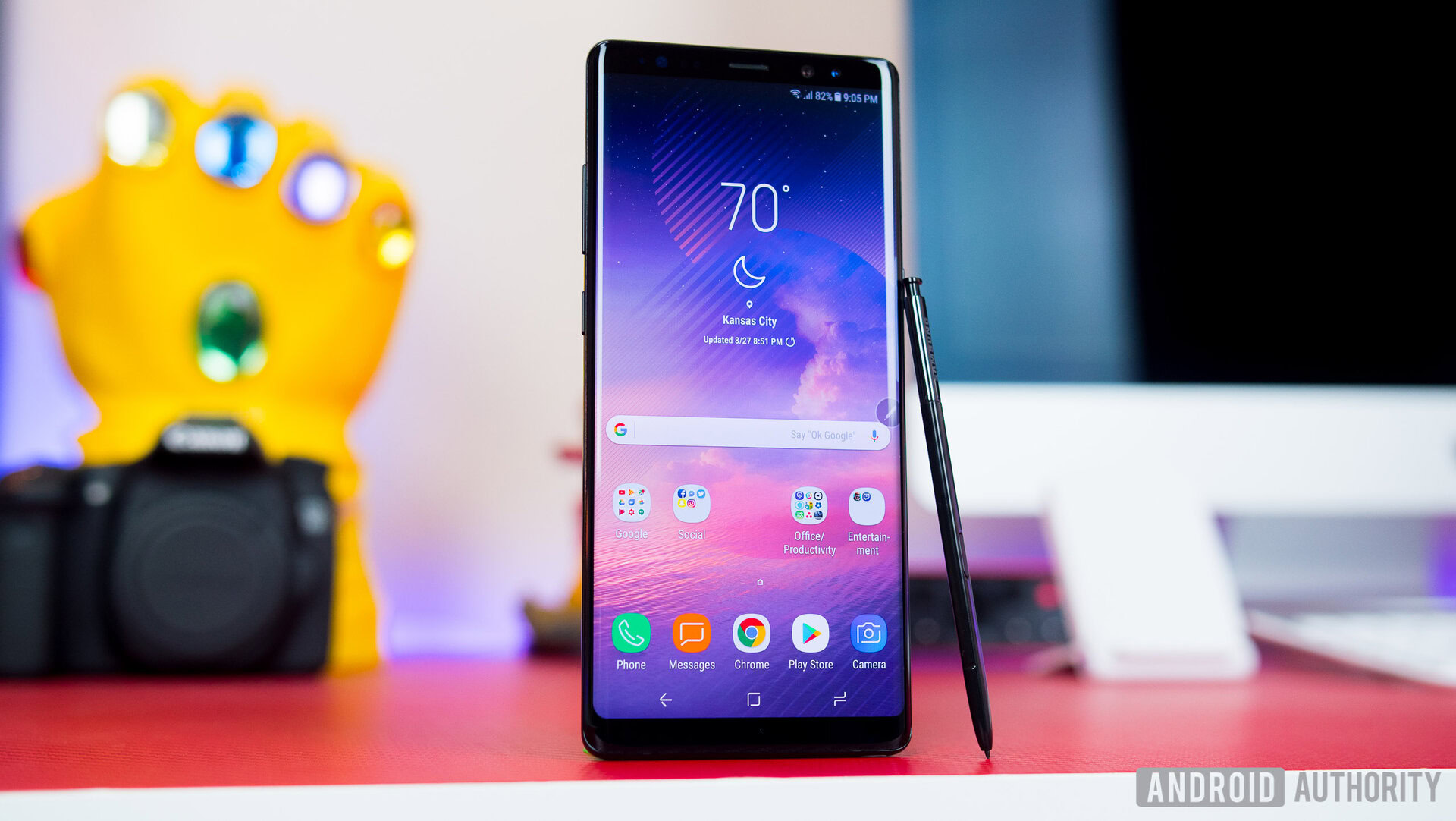
Overall, both devices offer a very similar core experience but focus on very different key areas. Both handsets have flagship specs, excellent displays, and great cameras but which device for you will depend on what features matter most to you.
For those who want a device that focuses on productivity, a refined experience and want a stylus as an additional input tool, as well as all of its other features, the Galaxy Note 8 is definitely the device to pick. For those who want an experience with a vastly superior audio, photography and videography experience, as well as a better in-hand feel, the LG V30 has the Galaxy Note 8 beat.
Which device would you pick and why? Do the S-Pen features matter more to you, or the camera and audio improvements that make the LG V30 a multimedia powerhouse? Let us know your views in the comments below!